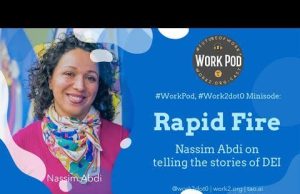The Ergonomic Evolution: Redefining Workplace Wellness for Remote Graduates
In the wake of a global shift towards remote work, a new focus on workplace wellness has emerged—one that transcends the traditional office space and enters the homes of graduates worldwide. As many young professionals say goodbye to the structured environment of cubicles and office ergonomics, they are greeted by the unchartered territory of home offices that vary as much as their resident’s degrees. This ergonomic evolution is not just about comfort; it’s about redefining the future of work and ensuring the long-term health of the workforce.
The urgency of incorporating ergonomic practices into remote work policies has never been more apparent. Graduates entering the workforce are encountering a new set of health considerations. Long hours in front of inadequately set-up workstations can lead to a plethora of health issues such as neck and back pain, eye strain, and repetitive stress injuries. Recognizing this, forward-thinking companies are instituting remote ergonomic assessments—evaluating employee’s home office setups and providing guidance to mimic the support once found in traditional office environments.
From ergonomic chairs that support posture to adjustable desks that promote standing work sessions, the market for home office equipment has seen an uptick. Specialized keyboards and mice designed to decrease wrist strain, along with monitor arms that allow for optimal screen height and distance, are becoming essentials for remote graduates. Employers are not just suggesting, but actively investing in these tools, understanding that the well-being of their employees is paramount to productivity and retention.
The investment goes beyond physical tools. Companies are offering workshops on maintaining good posture, stretching exercises tailored for remote workers, and even digital software to remind employees to take breaks and stay active. All of these initiatives signal a deepened commitment to employee well-being that extends beyond the office walls.
However, as home becomes the new office, the line of responsibility for workplace wellness is blurred. Who bears the burden of ensuring a healthy remote work setup—the employer, the employee, or a shared effort between the two? While companies can and should support their workers, remote graduates are also learning to advocate for their physical health, recognizing the long-term implications of their work environments.
Despite the growing awareness, the risks remain significant. A sedentary lifestyle, the lack of ergonomic furniture, and poor workstation setup can lead to chronic health problems. The societal implications are considerable, with a potential increase in healthcare costs and reduced quality of life for a significant portion of the workforce.
In conclusion, interviews with ergonomics experts, remote work advocates, and graduates who have adeptly transitioned from traditional to home offices underscore the necessity of this ergonomic evolution. By prioritizing ergonomic principles, both employees and employers can craft a sustainable work-life that supports physical health and fosters a productive workforce. As we navigate this new remote work landscape, the answer to the question of responsibility for workplace wellness seems to be a collective one. It is a shared journey, with each step towards ergonomic awareness serving as a stride towards a healthier future for all.































